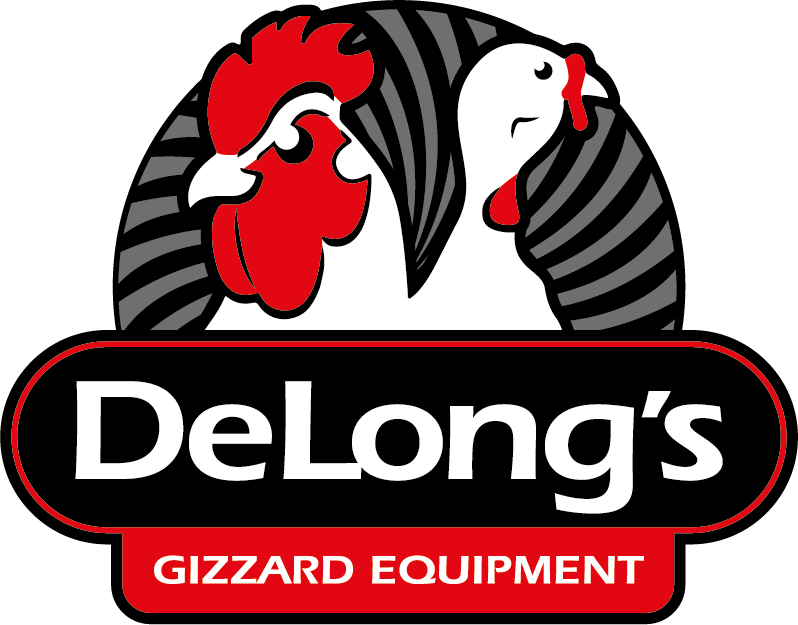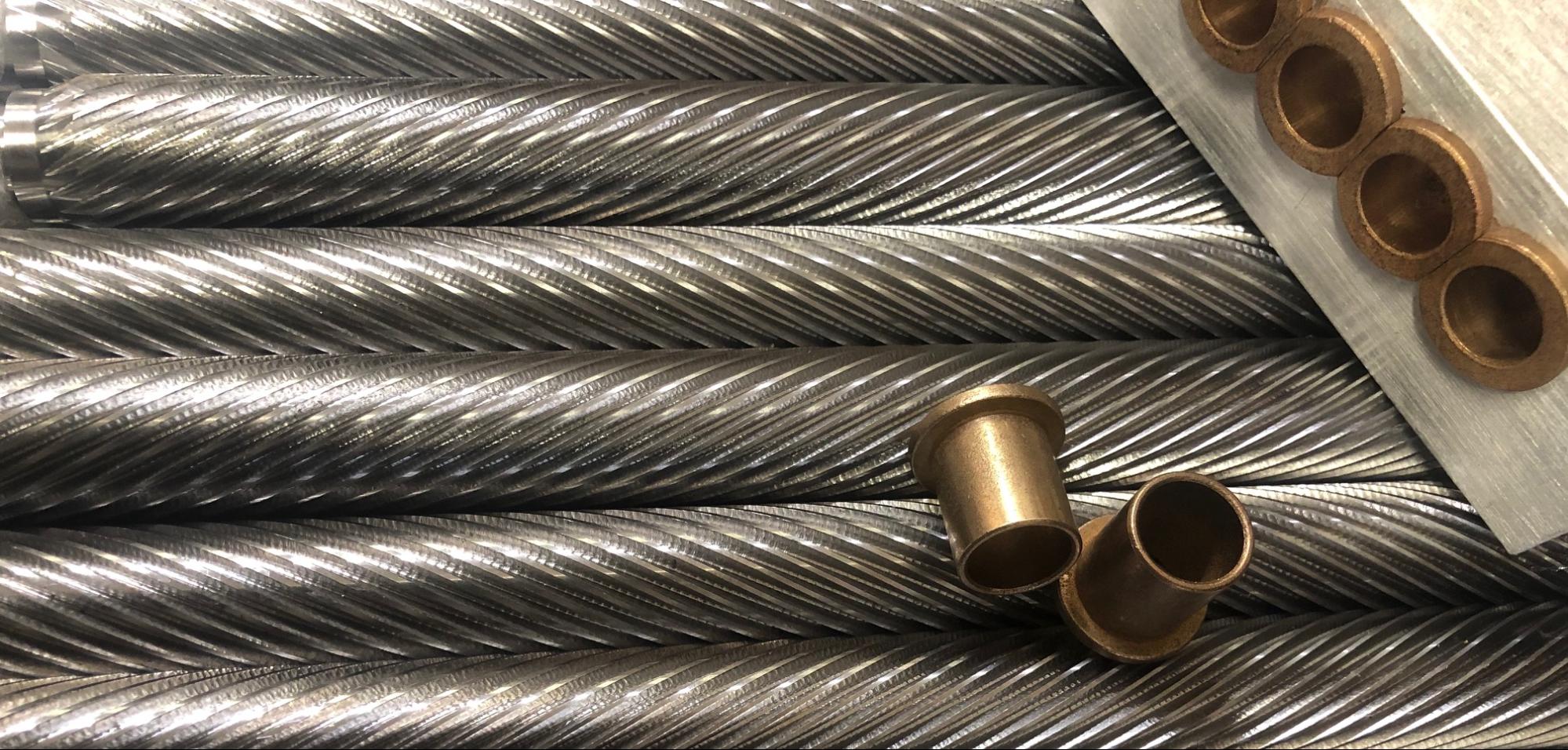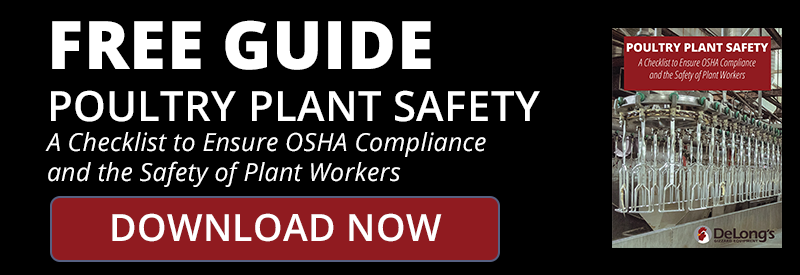
09 Apr Poultry Processing Sanitation Tips
Posted at 22:37h
in Plant Safety
Keeping meat processing plants clean and sanitary are essential steps in producing high quality and delicious meat products for human consumption. Keeping a sanitary environment is not easy tith the high volume of bacteria and microorganisms, but it is achievable and necessary. In order to bring your customers the very best, DeLong’s has compiled 8 tips to help keep your plant safe, sanitary and up-to-date.
- When starting cleaning and disinfection/sanitation measures all food products must be removed from the area.
- The first step in cleaning would be to physically remove scraps and pieces left behind using “Dry cleaning,” with a broom or shovel.
- After cleaning areas, disinfection must occur to remove the remaining 10% of resilient microorganisms.
- A cleaning method that is popular to ensure total sanitary conditions is high pressure cleaning. Pressurized water is applied by high pressure units and special spraying lances.
- When utilizing high pressure water cleaning, the pressure must be between 30-70 bar and the spraying nozzle 15 cm from the surface.
- Commercial cleaning agents in modern cleaning practices are complex compositions of either alkaline, acid or neutral chemicals. In some cases, surfactants or detergents are added to ensure full sanitation.
- For larger plants, foam cleaning can be used to get more contact in with surfaces. The foam stays on the surface longer, making the sanitation more effective.
- Absolute germ-free surfaces are not achievable, but disinfectants will kill all pathogens.
Sanitation is one of the most essential aspects of meat processing. Bringing quality products to families across America is the goal of every food provider. At DeLong’s, we are committed to bringing the most sanitary products to your table and your facility.



